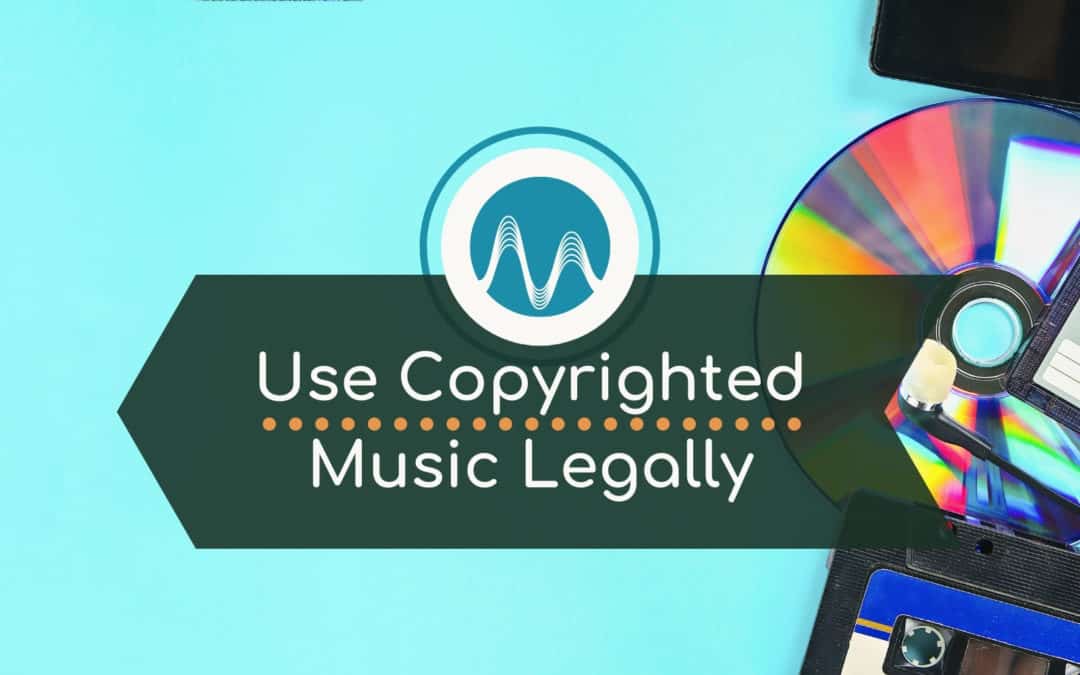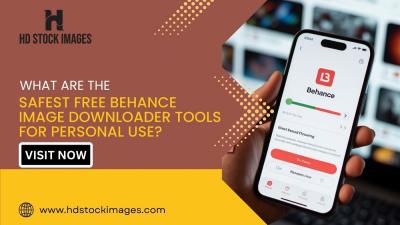If you're a content creator on YouTube, you've probably wondered about using music in your videos without running into copyright issues. Copyright laws can be tricky, especially when it comes to music, which often feels like a gray area for many creators. Music enhances your content, setting the mood and engaging your audience, but if you don’t navigate the copyright landscape carefully, you could face takedown notices or worse. In this guide, we’ll explore the ins and outs of music copyright on YouTube, so you can confidently use tracks that elevate your videos without getting into legal hot water.
Understanding Different Types of Music Licenses

When it comes to using music in your YouTube videos, it's essential to understand the various music licenses available. Each type of license dictates how you can use the music, and ignoring these rules can lead to copyright strikes. Here’s a breakdown of the most common music licenses you’ll encounter:
- General Copyright: This is the default status for most songs. If a song is under copyright, you need permission from the owner to use it, which usually involves licensing fees.
- Creative Commons Licenses: These licenses give creators different levels of freedom to use music. Here are a few types:
- CC BY: You can use the music as long as you give appropriate credit.
- CC BY-SA: Same as CC BY, but any derivative works must be licensed under identical terms.
- CC BY-ND: You can use the music without changes, and credit is required.
- CC BY-NC: You can use it but only for non-commercial purposes, with credit.
- Royalty-Free Music: This type allows you to use the music without having to pay royalties each time you use it, often for a one-time fee or for free under certain conditions.
- Public Domain: Works that are in the public domain can be used freely, without any licensing fees, and can be adapted and altered as per your creativity.
By familiarizing yourself with these different music licenses, you can make informed decisions on how to enhance your YouTube videos legally and creatively! Always ensure you read the terms correctly and get the necessary permissions to avoid any copyright conflicts.
Where to Find Royalty-Free Music

Finding the perfect soundtrack for your YouTube videos doesn’t have to be a time-consuming ordeal. There’s a treasure trove of platforms offering royalty-free music, ensuring you can create engaging content while steering clear of copyright woes. Here are some of the best places to search:
- Audio Library in YouTube: This is an often-overlooked gem. YouTube offers a vast collection of tracks and sound effects available for free. Just head to the YouTube Studio, and you can filter by genre, mood, or duration to find the right sound!
- Free Music Archive: This site features curated playlists and a range of genres to choose from. Make sure to check the licensing for each track – most are free, but specifics can vary.
- Incompetech: Kevin MacLeod's music library is a popular resource. He provides a myriad of tracks that can be used for free with attribution. If you prefer, you can also purchase a license for certain pieces.
- Pond5: This paid service has a broad selection of stock music that includes both affordable options and blockbuster tracks. You know what they say, you get what you pay for!
- Artlist.io: If you’re looking for a subscription-based model, Artlist offers high-quality music for a yearly fee. This can be ideal if you frequently upload videos and need diverse soundtracks.
When picking the right track, always remember to check the terms of use associated with the music. Use it confidently and enjoy crafting captivating videos!
Using Creative Commons Music

Creative Commons (CC) music is a fabulous way to spice up your YouTube content while staying on the right side of copyright. What’s more, it comes in various flavors, offering different usage rights. Here’s what you need to know:
- Types of Creative Commons Licenses:
- CC BY: You can use the music as long as you give appropriate credit.
- CC BY-SA: Similar to CC BY but also requires you to share any derivative works under the same license.
- CC BY-ND: You can use it, but you can't alter the music. Just use it as is!
- CC BY-NC: This allows non-commercial use only, and credit is still necessary.
- CC BY-NC-SA: Non-commercial use with the same sharing terms as above.
- CC BY-NC-ND: The most restrictive, allowing only non-commercial use without modifications.
To find Creative Commons music, consider visiting:
- Jamendo: This is a great platform for discovering new music, especially from indie artists. Just ensure you check the licensing for the track you choose!
- SoundCloud: Some artists upload their work under CC licenses; just filter your search accordingly. Look for tracks tagged with "Creative Commons."
- Free Music Archive: Apart from royalty-free tracks, FMA also hosts a variety of Creative Commons music, making it an excellent dual-purpose resource.
Using Creative Commons music can add a unique flair to your videos. Just remember to read the license details carefully and always give credit where it's due!
Getting Permission from Artists
When it comes to using music in your YouTube videos, obtaining permission from the artist is one of the most straightforward ways to avoid copyright issues. But what does this process look like? Well, let's break it down into simple steps.
First off, reaching out directly to the artist or their management can feel intimidating, but it’s essential if you want to use their work legally. Here is a brief checklist of what to consider:
- Identify the Artist: Make sure you know exactly who owns the rights to the song. This is often the artist, but it can also be their record label.
- Craft a Professional Email: Your request should be clear and polite. Explain who you are, what your video is about, and how you plan to use their music.
- Offer Incentives: If possible, offer to credit them in your video description. This can be a great promotional tool for independent artists.
- Follow Up: If you don’t receive a response, it’s okay to send a gentle reminder. Artists and managers are busy, and a friendly nudge could help.
Remember, getting permission is not only respectful but also opens the door to potentially exciting collaborations. Many artists appreciate independent creators and may be willing to allow you to use their music, especially if they see it as an opportunity to gain exposure.
Utilizing YouTube's Audio Library
If you're looking for a hassle-free way to use music without worrying about copyright, then YouTube's Audio Library is a game changer. This treasure trove of royalty-free music is perfect for content creators at every level. But what exactly does the library offer?
Here are some highlights:
- A Wide Variety of Tracks: The library features numerous genres, from soothing piano melodies to upbeat pop tracks. You’re bound to find something that fits the mood of your video!
- Easy to Use: Simply log into your YouTube account, head to the Audio Library, and browse through the selections. You can filter by genre, mood, or even duration.
- No Cost: All music in the library is free to use. There’s no need to worry about licensing fees or attributing the artist (though some tracks may still require credit).
- Downloadable Sounds: In addition to music tracks, YouTube's Audio Library also includes sound effects, which can add an extra layer of engagement to your videos.
In summary, utilizing YouTube's Audio Library is an efficient way to enhance your content while steering clear of any copyright troubles. So, why not dive in and explore? You might just find the perfect soundtrack for your next big project!
Best Practices for Music Attribution
When using music in your YouTube videos, giving proper credit is not just a courtesy—it's often a requirement. Proper music attribution can help you avoid copyright issues while also respecting the hard work of artists. Here are some best practices to keep in mind:
- Check Licensing Requirements: Before using any track, ensure you review the licensing terms. Some tracks may require specific attribution methods or may have conditions for use.
- Use Clear and Visible Text: Always have your attribution appear in a way that’s easily readable. You might place it in your video description or overlay it on-screen during the video.
- Include the Song Title and Artist Name: Be sure to mention the title of the song and the artist's name. For example, "Song Title" by Artist Name.
- Provide a Link: If possible, include a link back to the music source. This could be a website, streaming platform, or the artist's social media. It demonstrates respect and helps support the artist.
Consider this simple format for your music attribution:
| Attribution Element | Example |
|---|---|
| Song Title | "Sunny Days" |
| Artist Name | Jane Doe |
| Link | linktotheartist.com |
Finally, always remember that while attribution is an important part of using music, it doesn’t replace the need for a valid license. Always comply with the terms laid out by the music provider.
Conclusion: Staying Compliant and Creative
Staying compliant with copyright laws while infusing creativity into your YouTube videos can seem daunting, but it doesn’t have to be! In essence, the key lies in understanding the landscape of music licensing, knowing where to find fair-use tracks, and giving proper attribution. Here’s a quick recap of how to ensure you remain both compliant and creatively free:
- Use Royalty-Free or Creative Commons Music: These options allow you to leverage various music styles without the fear of a copyright strike.
- Explore Licensing Services: Many websites offer licenses that are tailored for video creators. Services like Epidemic Sound or Artlist provide a plethora of options.
- Always Check Terms of Use: Whether it's a free track or a paid one, make it a habit to read through the rules attached to that music.
- Develop Your Own Music: As you grow in your creative journey, consider creating your own music or collaborating with emerging artists.
At the end of the day, complying with copyright regulations doesn't mean sacrificing creativity. With a little research and respect for the artists, you can develop amazing content that resonates with your audience—without any legal headaches!
 admin
admin








